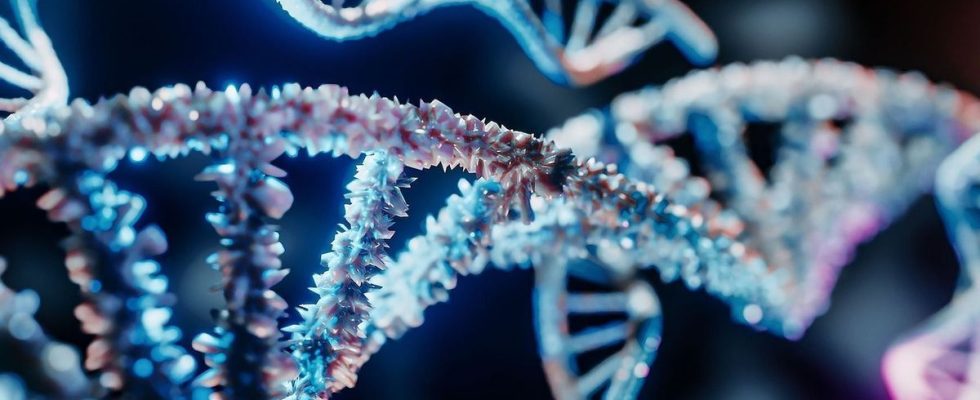Published on
Updated
Reading 2 mins.
Scientists on Wednesday unveiled the first human “pan-genome”, which lists the most complete range of genes in the human species to date, with the hope that it will help explain a range of diseases.
The announcement was hailed as “ushering in a new era for genetic diagnostics“, by geneticist David Adelson, of the Australian University of Adelaide.
A first human genome, which brings together all the genetic material unique to a man, was sequenced in 2003. It has served as a reference point for other human genomes published since.
Above all, it has made it possible to identify the genes responsible for specific diseases, to initiate research towards more personalized medicine and to shed light on the mechanism of human evolution.
But 70% of the sequences of this first genome came from a single individual, – who had responded to an ad in a newspaper in the American city of Buffalo, in 1997 -, the rest from twenty other people. This has limited its use for populations of other ethnic origins.
The first pan-genome was presented in a series of scientific papers in the journal Nature by a group of scientists assembled in the Human Pan-Genome Reference Consortium (HPRC).
It is compiling the genomes of 47 individuals of various origins, and should collect those of 350 individuals by mid-2024.
Of these 47 people, who are anonymous, more than half are from Africa, a third from the Americas, Asia with six individuals and Europe with only one, an Ashkenazi Jew. Oceania is not represented.
The genome is the genetic blueprint of any organism. It contains all the DNA elements incorporating the instructions for it to live and develop.
99% same
The genome of two individuals is more than 99% identical, but the remaining differences may facilitate the occurrence of certain diseases in one individual rather than another.
The reference pan-genome could thus help shed light on these differences in genetic samples, explained Benedict Paten, a researcher at the University of California and co-author of the study.
“This will improve genetic testing and at the same time provide a better understanding of the contribution of all kinds of genetic variations to health and disease.“, he said at a press conference.
Another co-author of the study, Erich Jarvis of Rockefeller University in the United States, provided an example of groups of genes, known as major histocompatibility complex (MHC), which are involved in the functioning of the immune system.
“It was previously impossible to study the diversity of MHCs“, as it is great between individuals, indicated the researcher.
Progress in this area would have beneficial consequences for organ transplantation, in order to avoid rejection.
For David Adelson, the Australian geneticist, this first edition of the pan-genome has already increased the accuracy of detecting genetic changes by around 34%.
The project “will benefit people of all backgrounds, unlike the current reference genome which does not reflect the diversity of humanity“, he explained to AFP.
The pan-genome represents a “milestone in human genetics“, but also a challenge, recalled two American experts quoted in Nature, Arya Massarat and Melissa Gymrek.
Beyond the inclusion of sequences from people belonging to under-represented groups, the adoption of this new repository will require training from scientists.
At any rate, “this will facilitate the discovery of genetic variants that influence physical and physiological traits and – hopefully – then lead to health advances for many people“, they estimated.
